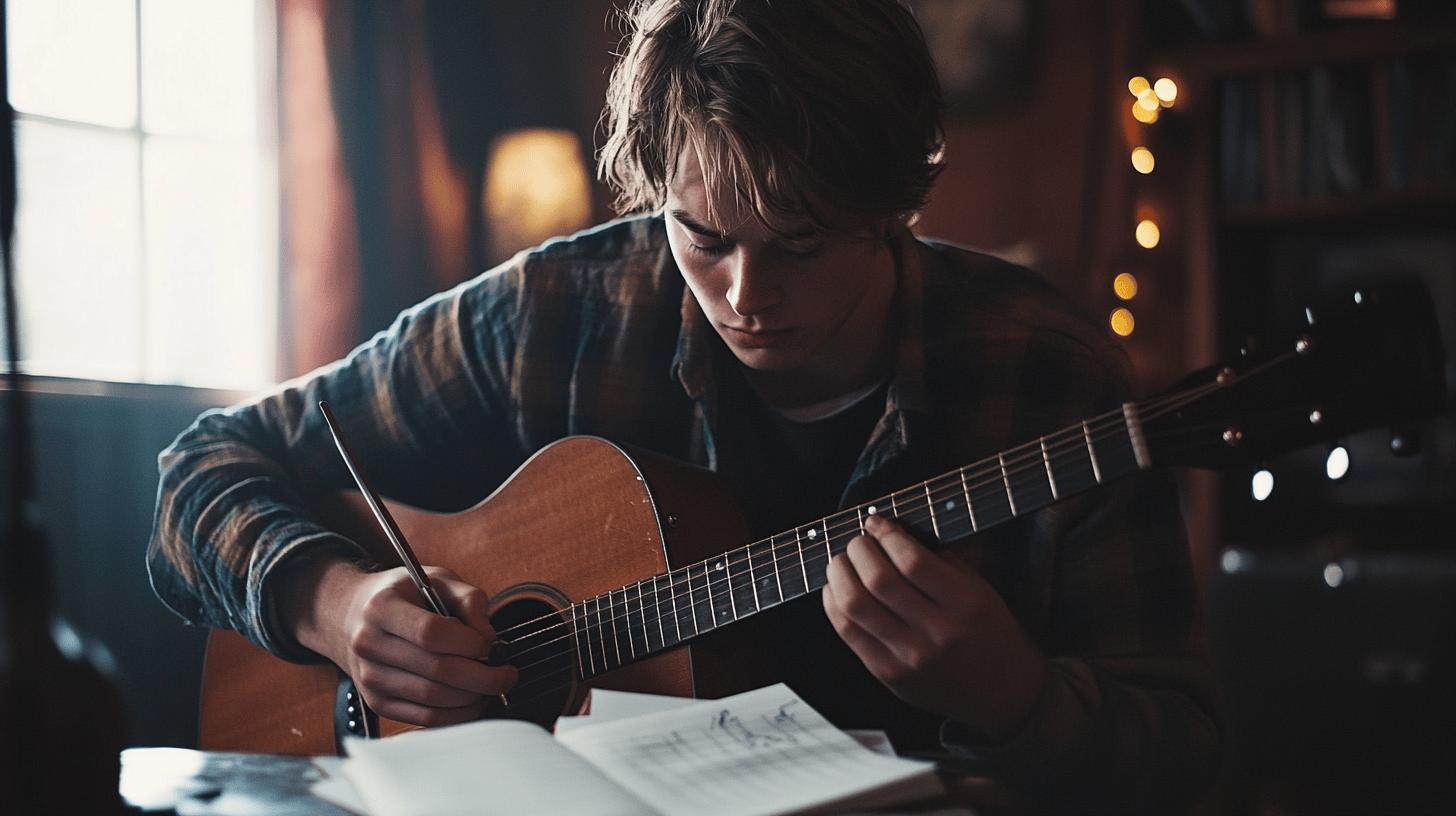Can a song capture the raw, unbridled essence of poverty? Songs about being poor do exactly that, painting vivid pictures of struggles and hardship. These tracks become powerful narratives, resonating deeply with listeners and offering a glimmer of hope amid adversity.
Through emotive rhythms, melodies, and poignant lyrics, music transcends mere notes, providing stories of resilience and survival. Explore how these songs not only touch lives but also inspire through their emotional resonance, leaving listeners with a profound sense of empathy and understanding.
Exploring Songs About Being Poor

Songs about being poor provide a poignant narrative of resilience and survival, resonating deeply with listeners. These poverty-themed music tracks often mirror the emotional and social realities of financial struggle.
They serve as a reminder of the economic disparity faced by many, fostering a sense of empathy and awareness among audiences. By weaving stories of hardship, these songs allow listeners to explore the complexities of poverty through a personal and relatable lens, creating a powerful emotional connection.
Musical elements such as rhythm, melody, and lyrics play a crucial role in conveying the narrative of poverty. The rhythm often mirrors the heartbeat of struggle, while melodies can evoke feelings of hope or despair.
Lyrics are the core of storytelling, painting vivid pictures of economic hardship and the human spirit’s resilience. Through these elements, songs about being poor craft an immersive experience, offering insights into the lives of those battling financial adversity.
-
"Fast Car" by Tracy Chapman
-
"Living on a Prayer" by Bon Jovi
-
"The River" by Bruce Springsteen
-
"Coal Miner’s Daughter" by Loretta Lynn
-
"Broke" by Teddy Swims
Musical Tales of Financial Struggle: A Cross-Genre Analysis

Music about being broke spans various genres, each offering unique perspectives and techniques to portray financial struggles. In the realm of blues, the use of melancholic melodies and emotive vocals often underscore the themes of loss and hardship.
Songs like "Nobody Knows You When You’re Down and Out" by Bessie Smith and "Hard Time Killing Floor Blues" by Skip James convey stories of personal and economic downfall with a raw, authentic expression.
The blues genre uses slow tempos and expressive dynamics to heighten the emotional impact, allowing listeners to deeply empathize with the plight of financial hardship.
Hip-hop tracks addressing poverty, such as "Changes" by 2Pac and "It’s Like That" by Run-D.M.C., utilize powerful rhythms and compelling lyrical narratives to highlight social and economic issues. The genre’s emphasis on rhythm and wordplay brings attention to the realities of growing up in impoverished environments.
These tracks often feature a driving beat that mirrors the urgency and intensity of the struggles depicted in the lyrics. Through sharp, incisive commentary, hip-hop provides a voice for marginalized communities, advocating for change and resilience against systemic inequality.
Country and rock music also contribute to the conversation on financial hardship, using storytelling and straightforward melodies to connect with audiences. Country songs often feature narratives about working-class life, where the simplicity of the melodies accentuates the sincerity of the lyrics.
Rock music, with its dynamic instrumentation and varied tempos, captures the rebellious spirit against economic adversity. Both genres rely on the power of storytelling to evoke empathy and solidarity, making the listener feel part of a shared experience of endurance and hope.
Blues Songs About Financial Struggle:
-
"Nobody Knows You When You’re Down and Out" by Bessie Smith
-
"Hard Time Killing Floor Blues" by Skip James
Hip-Hop Tracks Addressing Poverty:
-
"Changes" by 2Pac
-
"It’s Like That" by Run-D.M.C.
Voices of the Working Class: Songs as Social Commentary

Songs that highlight poverty issues often serve as powerful tools for raising awareness about economic disparities. These tracks, known as protest songs about poverty, play a crucial role in bringing attention to the struggles faced by the working class.
By addressing themes of economic hardship and inequality, these songs resonate with listeners, fostering empathy and understanding. The emotional resonance of these tracks allows them to transcend mere entertainment, becoming catalysts for reflection and discussion about social and economic issues.
Artists use their platform to advocate for social change through music, crafting lyrics that speak to the heart of economic injustices. Working-class anthems such as "Fortunate Son" by Creedence Clearwater Revival and "Which Side Are You On?" by Pete Seeger exemplify how musicians can voice the frustrations and aspirations of those affected by poverty.
These songs often feature powerful narratives and evocative imagery, capturing the essence of financial struggles and the fight for equality. By doing so, they encourage listeners to consider their role in addressing these issues and inspire action.
The impact of these songs extends beyond their immediate audience, reaching wider communities and influencing public opinion. Tracks like "Fight The Power" by Public Enemy and "Get Up Stand Up" by Bob Marley and the Wailers have become anthems for social movements, uniting individuals under a common cause.
By highlighting poverty and advocating for change, these songs provide a compelling commentary on the need for societal transformation. They remind listeners of the power of music as a force for social good, urging them to confront and challenge the economic disparities that persist in society.
-
"Fortunate Son" by Creedence Clearwater Revival
-
"Which Side Are You On?" by Pete Seeger
-
"Fight The Power" by Public Enemy
-
"Do They Know It’s Christmas?" by Band Aid
-
"Get Up Stand Up" by Bob Marley and the Wailers"
The Emotional Impact of Financial Hardship in Music

Songs capturing financial difficulties serve as a profound form of expression, offering listeners an emotional outlet that resonates with their personal experiences. At the heart of these tracks are lyrics that vividly depict poverty, crafting narratives that evoke empathy and understanding.
The melodies often complement the lyrical themes, using minor chords to convey sorrow or major chords to uplift and inspire hope. This blend of words and music creates a tapestry of emotion, allowing listeners to connect deeply with the stories being told.
The shared experience of hardship and resilience is palpable, inviting audiences to reflect on their own challenges and find solace in the music. These songs of economic survival provide comfort and solidarity, acting as anthems for those enduring financial struggles.
By portraying themes of resilience and hope amidst adversity, they offer listeners a sense of community and understanding. Songs like "Fast Car" by Tracy Chapman and "9 to 5" by Dolly Parton embody this spirit, presenting narratives of escape and frustration that many find relatable.
In moments of despair, these tracks remind listeners that they are not alone, fostering a collective resilience and encouraging perseverance through tough times.
| Song Title | Emotional Theme | Artist |
|---|---|---|
| “The River” | Resilience | Bruce Springsteen |
| “Fast Car” | Hope and Escape | Tracy Chapman |
| “Keep Ya Head Up” | Empowerment | 2Pac |
| “9 to 5” | Frustration | Dolly Parton |
Final Words
Exploring songs about being poor reveals their role in reflecting and addressing society’s economic challenges. These tracks resonate across genres, from blues and hip-hop to rock and country, each offering unique insights into financial struggles.
Music not only tells stories of resilience and survival but also serves as a powerful tool for social commentary and change. Ultimately, songs about being poor inspire empathy, foster solidarity, and encourage hope amidst adversity.
FAQ
What are some notable songs about being poor?
Songs about being poor include "Fast Car" by Tracy Chapman, "Living on a Prayer" by Bon Jovi, and "The River" by Bruce Springsteen. These tracks address financial hardship and economic disparity, resonating with listeners through narratives of resilience.
How do different music genres portray financial struggles?
Different genres such as blues, hip-hop, and rock convey financial struggles uniquely. Blues emphasizes raw emotion with simple chord progressions, while hip-hop uses powerful lyrics and beats to discuss poverty. Rock often combines energetic rhythms with compelling narratives.
Songs often highlight economic disparity and advocate for social change, raising awareness about poverty issues. Artists use music as a platform to inspire action, blending rhythm, lyrics, and melody to convey powerful messages.
What emotional themes are common in songs about financial hardship?
Songs about financial hardship often evoke themes of resilience, hope, empowerment, and frustration. They resonate with listeners by portraying struggles and offering narratives of survival and strength in tough circumstances.

